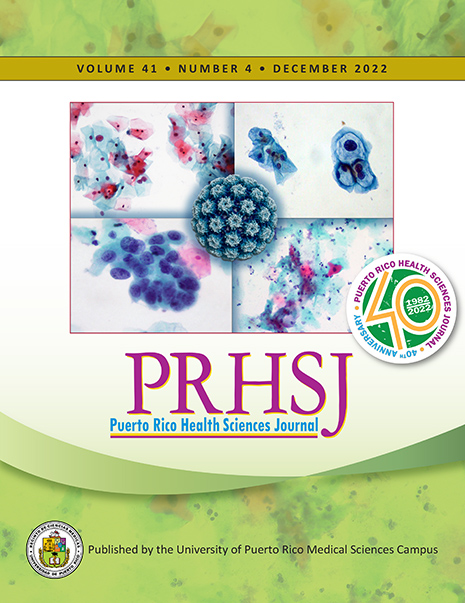Abstract
Objective: The main objective was to present the experience of the Institute of Forensic Sciences of Puerto Rico in facing the severe acute respiratory syndrome coronavirus 2 (SARS-CoV-2), also known as COVID-19. It has been found that some COVID-19 positive cases may continue to show post-mortem positive results for up to 49 days. Methods: The in vitro technique of ID NOW COVID-19 was used in the analysis to evaluate the presence of SARS-Cov-2 in postmortem forensic cases. This isothermal method allows to amplify and identify the presence of the RNA-dependent RNA polymerase viral segment. Information on demographics, comorbidities, and the manner and cause of death was collected. Results: A total of 612 subjects were sampled, of which 41 (6.7%) tested positive for COVID-19;14 (34.1%) of those subjects remained positive for more than 7 days Postmortem. Of the 41 positive cases, only 3 (7.3%) had been diagnosed with COVID-19 before their demise. The most common comorbidities were hypertension (36%), obesity (29%), and mental health conditions (50%). Conclusion: Results from postmortem COVID-19 testing revealed that some cadavers remain COVID-19 positive for a longer period than expected. Despite this, based on the information collected from the cases that were tested more than once, there is no direct correlation between the cause of death and persistent COVID-19 positivity. We recommend that additional investigations be carried out, in which investigations viral load and the maximum time of the infectious phase are specifically evaluated.
Authors who publish with this journal agree to the following terms:
a. Authors retain copyright and grant the journal right of first publication with the work simultaneously licensed under a Creative Commons Attribution License that allows others to share the work with an acknowledgement of the work's authorship and initial publication in this journal.
b. Authors are able to enter into separate, additional contractual arrangements for the non-exclusive distribution of the journal's published version of the work (e.g., post it to an institutional repository or publish it in a book), with an acknowledgement of its initial publication in this journal.
c. Authors are permitted and encouraged to post their work online (e.g., in institutional repositories or on their website) prior to and during the submission process, as it can lead to productive exchanges, as well as earlier and greater citation of published work (See The Effect of Open Access).
